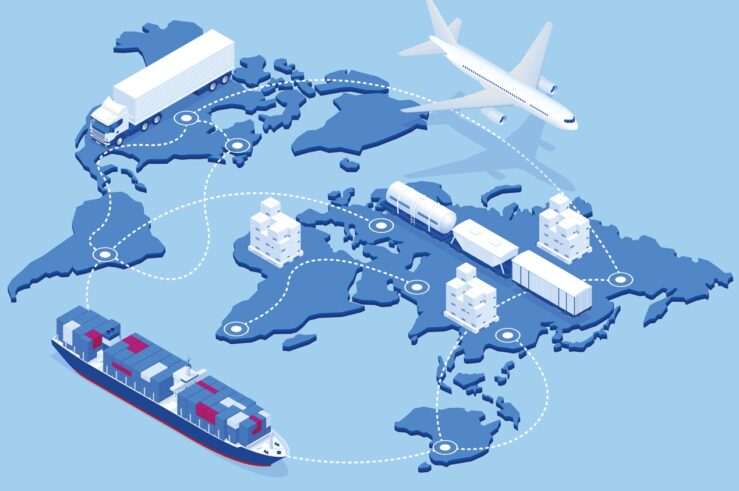
The recent launch of the international Multilateral Pharmaceutical Merger Task Force (MPMTF) is just the latest example of burgeoning cooperative efforts by leading competition agencies to promote convergence in antitrust enforcement. (See my recent paper on the globalization of antitrust, which assesses multinational cooperation and convergence initiatives in greater detail.) In what is a first, the U.S. Federal Trade Commission (FTC), the U.S. Justice Department’s (DOJ) Antitrust Division, offices of state Attorneys General, the European Commission’s Competition Directorate, Canada’s Competition Bureau, and the U.K.’s Competition and Market Authority (CMA) jointly created the MPMTF in March 2021 “to update their approach to analyzing the effects of pharmaceutical mergers.”
To help inform its analysis, in May 2021 the MPMTF requested public comments concerning the effects of pharmaceutical mergers. The MPMTF sought submissions regarding (among other issues) seven sets of questions:
- What theories of harm should enforcement agencies consider when evaluating pharmaceutical mergers, including theories of harm beyond those currently considered?
- What is the full range of a pharmaceutical merger’s effects on innovation? What challenges arise when mergers involve proprietary drug discovery and manufacturing platforms?
- In pharmaceutical merger review, how should we consider the risks or effects of conduct such as price-setting practices, reverse payments, and other ways in which pharmaceutical companies respond to or rely on regulatory processes?
- How should we approach market definition in pharmaceutical mergers, and how is that implicated by new or evolving theories of harm?
- What evidence may be relevant or necessary to assess and, if applicable, challenge a pharmaceutical merger based on any new or expanded theories of harm?
- What types of remedies would work in the cases to which those theories are applied?
- What factors, such as the scope of assets and characteristics of divestiture buyers, influence the likelihood and success of pharmaceutical divestitures to resolve competitive concerns?
My research assistant Andrew Mercado and I recently submitted comments for the record addressing the questions posed by the MPMTF. We concluded:
Federal merger enforcement in general and FTC pharmaceutical merger enforcement in particular have been effective in promoting competition and consumer welfare. Proposed statutory amendments to strengthen merger enforcement not only are unnecessary, but also would, if enacted, tend to undermine welfare and would thus be poor public policy. A brief analysis of seven questions propounded by the Multilateral Pharmaceutical Merger Task Force suggests that: (a) significant changes in enforcement policies are not warranted; and (b) investigators should employ sound law and economics analysis, taking full account of merger-related efficiencies, when evaluating pharmaceutical mergers.
While we leave it to interested readers to review our specific comments, this commentary highlights one key issue which we stressed—the importance of giving due weight to efficiencies (and, in particular, dynamic efficiencies) in evaluating pharma mergers. We also note an important critique by FTC Commissioner Christine Wilson of the treatment accorded merger-related efficiencies by U.S. antitrust enforcers.
Discussion
Innovation in pharmaceuticals and vaccines has immensely significant economic and social consequences, as demonstrated most recently in the handling of the COVID-19 pandemic. As such, it is particularly important that public policy not stand in the way of realizing efficiencies that promote innovation in these markets. This observation applies directly, of course, to pharmaceutical antitrust enforcement, in general, and to pharma merger enforcement, in particular.
Regrettably, however, though general merger-enforcement policy has been generally sound, it has somewhat undervalued merger-related efficiencies.
Although U.S. antitrust enforcers give lip service to their serious consideration of efficiencies in merger reviews, the reality appears to be quite different, as documented by Commissioner Wilson in a 2020 speech.
Wilson’s General Merger-Efficiencies Critique: According to Wilson, the combination of finding narrow markets and refusing to weigh out-of-market efficiencies has created major “legal and evidentiary hurdles a defendant must clear when seeking to prove offsetting procompetitive efficiencies.” What’s more, the “courts [have] largely continue[d] to follow the Agencies’ lead in minimizing the importance of efficiencies.” Wilson shows that “the Horizontal Merger Guidelines text and case law appear to set different standards for demonstrating harms and efficiencies,” and argues that this “asymmetric approach has the obvious potential consequence of preventing some procompetitive mergers that increase consumer welfare.” Wilson concludes on a more positive note that this problem can be addressed by having enforcers: (1) treat harms and efficiencies symmetrically; and (2) establish clear and reasonable expectations for what types of efficiency analysis will and will not pass muster.
While our filing with the MPMTF did not discuss Wilson’s general treatment of merger efficiencies, one would hope that the task force will appropriately weigh it in its deliberations. Our filing instead briefly addressed two “informational efficiencies” that may arise in the context of pharmaceutical mergers. These include:
More Efficient Resource Reallocation: The theory of the firm teaches that mergers may be motivated by the underutilization or misallocation of assets, or the opportunity to create welfare-enhancing synergies. In the pharmaceutical industry, these synergies may come from joining complementary research and development programs, combining diverse and specialized expertise that may be leveraged for better, faster drug development and more innovation.
Enhanced R&D: Currently, much of the R&D for large pharmaceutical companies is achieved through partnerships or investment in small biotechnology and research firms specializing in a single type of therapy. Whereas large pharmaceutical companies have expertise in marketing, navigating regulation, and undertaking trials of new drugs, small, research-focused firms can achieve greater advancements in medicine with smaller budgets. Furthermore, changes within firms brought about by a merger may increase innovation.
With increases in intellectual property and proprietary data that come from the merging of two companies, smaller research firms that work with the merged entity may have access to greater pools of information, enhancing the potential for innovation without increasing spending. This change not only raises the efficiency of the research being conducted in these small firms, but also increases the probability of a breakthrough without an increase in risk.
Conclusion
U.S. pharmaceutical merger enforcement has been fairly effective in forestalling anticompetitive combinations while allowing consumer welfare-enhancing transactions to go forward. Policy in this area should remain generally the same. Enforcers should continue to base enforcement decisions on sound economic theory fully supported by case-specific facts. Enforcement agencies could benefit, however, by placing a greater emphasis on efficiencies analysis. In particular, they should treat harms and efficiencies symmetrically (as recommend by Commissioner Wilson), and fully take into account likely resource reallocation and innovation-related efficiencies.




